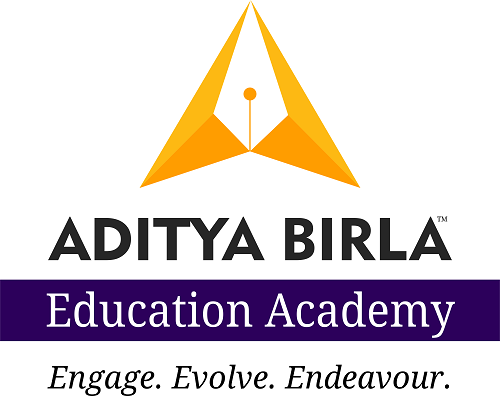"She stood frozen, chalk in hand, as the backbenchers whispered, a paper plane flew past her shoulder, and three hands shot up in disagreement. No, this wasn't her first class - it was her fiftieth - and still, the classroom felt like a storm.
That's when she realised: teaching content isn't enough. You must learn to hold the space."
Classroom management isn't about control - it’s about connection. Structure. Empathy. And knowing how to guide energy rather than suppress it.
A Well-Managed Classroom IS Like A River
Calm on the surface, purposeful in its flow - carving paths gently through even the toughest rocks of distraction, difference, and doubt. It doesn't shout to be heard; it simply moves - with direction, depth, and quiet strength. Just as rivers know where to bend, pause, or surge - teachers who master classroom management create environments where learning flows freely, without friction.
But unlike rivers, classrooms do not find their rhythm on their own.
They need a steady hand - a teacher’s presence that is not about control, but about conscious orchestration.
That is what classroom management truly is. It is not about controlling the chaos - it is about conducting it into harmony.
Why Classroom Management Matters More Than Ever
In India's classrooms - where 40 voices, 20 dialects, and 100 dreams sit together - the importance of classroom management cannot be overstated.
Because before we can differentiate instruction, we must first unite attention. Before we ask for higher-order thinking, we must offer psychological safety.
According to Maslow's Hierarchy of Needs, no learning happens until students feel secure. And Vygotsky's Zone of Proximal Development reminds us that learning thrives in a space held gently by capable hands - that is, you, the teacher. And so, classroom management becomes your invisible curriculum - teaching focus, kindness, respect, and rhythm - even before you begin teaching your subject.
Without it, even the best lesson plan remains a paper boat in a storm.
With it, even the most complex concepts can land softly on the minds of young learners.
The importance of classroom management lies in its power to build a space that is safe, responsive, and alive. A space where discipline is not enforced but experienced - through dignity, consistency, and connection.
This is not just a pedagogical skill. It's a life skill for educators.
Strategies Rooted in Psychology, Proven in Classrooms
At the Aditya Birla Education Academy (ABEA) - hailed as the best teacher upskilling institute in India - we don’t just talk theory. We bring strategies alive in teacher workshops, including the one I was privileged to facilitate.
Here are the classroom management strategies every teacher should be equipped with — grounded in research, refined in real schools:
1. The Power of Predictability: Rules & Routines
Consistency builds trust.
Teachers should be encouraged to co-create rules with students. Why? Because students respect what they help build. Morning check-ins, visual timetables, exit slips — simple routines reduce anxiety and increase agency.
2. Assertive Discipline - Not Aggressive, Not Permissive
One of the most respected voices in this realm is Dr. Lee Canter, whose Assertive Discipline framework has transformed how teachers establish authority without aggression. His philosophy teaches educators to be calmly firm, not controlling - to set clear expectations and consequences while maintaining respect and warmth. Canter emphasizes that students thrive when boundaries are predictable and enforced consistently, but not harshly. This approach helps teachers avoid emotional outbursts or power struggles. Instead of reacting, they respond with intention. It's not about dominance; it's about creating a safe emotional climate where respect flows both ways - from student to teacher and back. At its core, Canter's model empowers teachers to be compassionate leaders of their classrooms, not mere managers of behaviour.
Through roleplay and discussion at ABEA, educators practice how to enforce expectations with clarity and kindness — replacing chaos with calm leadership.
3. Positive Behaviour Support & Catching Students Being Good
Classroom management thrives on positive reinforcement.
Instead of waiting to correct mistakes, ask: What if we celebrated effort? Notice resilience?
The usage of star boards, praise postcards, and digital badges, thereby turning recognition into a daily habit, will definitely add to a more organized, joyous, and respectful environment in the classroom.
4. Strategic Seating & Emotional Climate Mapping
From horseshoe seating to colour-coded zones for mood check-ins, understand that environment shapes engagement.
Students placed in positive proximity are less likely to disrupt and more likely to collaborate.
5. Restorative Circles & Emotional Regulation
Instead of punishment, explore restoration
The use of class circles, reflection sheets, and conflict-resolution protocols helps teachers raise emotionally intelligent citizens, not just obedient students.
Where ABEA Enters The Story
The Aditya Birla Education Academy (ABEA) isn't just a training body. It's a beacon - igniting the passion and potential of India's educators.
Widely recognized as the best teacher upskilling institute in India, ABEA offers a spectrum of teacher development initiatives, like:
- ACEd (Advanced Certificate in Educational Design) - where pedagogy meets innovation
- Strategic Leadership Programs - empowering educators to lead with vision
- INSET Workshops - hands-on, classroom-ready tools for real-world teaching
- Global collaboration with the Renzulli Centre for Creativity - unlocking creative gifted teaching strategies
When it comes to classroom management, ABEA doesn't just teach the "what" - it deepens the "why" and equips teachers with the "how."
By blending neuroscience, pedagogy, and practice, these certifications ensure that teachers don't just understand classroom management strategies - they live them.
Their programs don't just train - they transform. They don't hand out checklists - they build communities of reflective practitioners.
Interested in upskilling through one of these certifications? Let's explore the opportunities here.
My Experience at the Aditya Birla Education Academy
In my own session with ABEA teachers, we explored classroom management not as a checklist, but as a culture.
We discussed the emotional layers of disruptions, the psychology behind student resistance, and the beauty of transforming chaos into creativity.
From reflective journals to peer modelling, the strategies we unpacked were not abstract theories - they were actionable, impactful, and deeply human.
Classroom Management is A Living Art
Imagine a classroom where..
- The shy student finally speaks.
- The restless child finds his rhythm.
- The teacher smiles more than she scolds.
That's not a fantasy. That's what effective classroom management makes possible.
Classroom management is not a one-size-fits-all formula. It is like gardening.
You cannot force the seed to sprout - but you can prepare the soil.
You cannot guarantee rain - but you can keep the roots ready.
And when storms come - as they will - the well-managed classroom, like the well-tended field, bends but does not break. That's the power of understanding and practicing classroom management strategies.
That's the power of being guided by institutions like ABEA, the best teacher upskilling institute in India, that value not just what we teach, but how we hold the space in which learning happens.
Final Reflection - The Teacher's Eternal Role
In the Ramcharitmanas, Shri Tulsidas Ji writes:
"गुरु बिनु भवनिधि तरइ न कोई। जो बिरंचि शंकर सम होई॥"
(Without a guru, no one can cross the ocean of life - even if they are as powerful as Brahma or Shiva.)
Just as no soul crosses life's ocean without a guide, no student truly grows without a teacher who manages the classroom with love, wisdom, and presence.
FAQ's
Q1. What does effective classroom management truly mean for modern Indian classrooms?
Effective classroom management is the ability to create a structured, predictable, and emotionally safe environment where learning can thrive. It involves routines, behaviour expectations, communication clarity, and teacher presence—not control but coordinated guidance.
Q2. Why is classroom management considered the foundation of quality teaching?
Without classroom management, even the best lesson plan fails. Management builds attention, safety, and trust—all prerequisites for learning. Research from NEP 2020 and global pedagogy frameworks shows that students learn better when classrooms feel predictable, respectful, and emotionally secure.
Q3. What are the most effective classroom management strategies backed by research?
High-impact strategies include co-created rules, predictable routines, assertive discipline, positive reinforcement, relationship-building, strategic seating, and restorative practices. These approaches are widely supported by educational psychology and behaviour science.
Q4. How can teachers build trust and connection while maintaining discipline?
Teachers can balance warmth and firmness by setting clear expectations, using consistent consequences, validating emotions, and offering student voice in decision-making. Trust grows when students feel seen, respected, and guided—not controlled.
Q5. How does positive reinforcement improve classroom behaviour?
Positive reinforcement encourages desired behaviour by celebrating effort, growth, and participation. Research shows that recognising positive behaviours increases motivation, reduces disruptions, and builds a classroom climate where students strive to succeed.
Q6. What role does a teacher's body language play in effective classroom management?
Nonverbal cues - eye contact, posture, movement, and tone - signal confidence, care, and expectations. Strong teacher presence can redirect misbehaviour, boost engagement, and create an atmosphere of attentiveness without raising one’s voice.
Q7. What is assertive discipline, and why is it important for teachers?
Assertive discipline encourages teachers to set firm, clear, and consistent expectations without aggression or permissiveness. It empowers teachers to respond calmly, prevent power struggles, and build a respectful learning environment.
Q8. How can teachers manage diverse classrooms with mixed abilities effectively?
By using differentiated tasks, flexible grouping, visual supports, and scaffolded instructions. Effective management recognises that students learn differently and ensures each learner feels supported without disrupting class flow.
Q9. How can teachers handle common behavioural challenges without conflict?
Using strategies like proximity, restorative language, redirection, reflection sheets, and calm tone. Consistent procedures prevent escalation and help students learn self-regulation instead of facing punitive reactions.
Q10. What role does emotional safety play in classroom management?
Students participate more, take risks, and think critically when they feel emotionally safe. A classroom that values mistakes, promotes empathy, and avoids humiliation builds deeper learning and stronger teacher-student relationships.
Q11. How can teachers create routines that reduce chaos and increase focus?
Routines such as entry procedures, transitions, early-finisher tasks, exit tickets, and noise-level norms help students know what to expect. Consistency reduces anxiety and frees up teaching time.
Q12. How does ABEA support teachers in mastering classroom management?
ABEA offers research-backed training, workshops, and behavioural management frameworks designed for Indian classrooms. Educators learn practical strategies rooted in psychology, restorative practices, and inclusive pedagogy—helping them build confident, well-managed classrooms.







